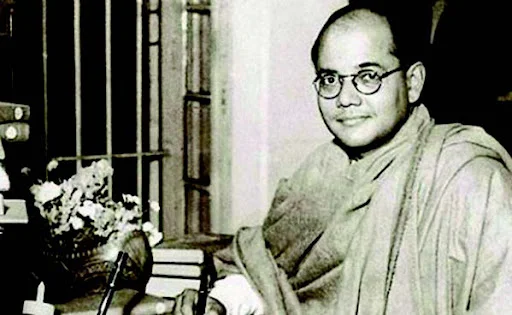Netaji Subhas Chandra Bose The Truth Behind His Plane Crash and the Enigma of His Disappearance
Introduction
Netaji Subhas Chandra Bose, one of India's most revered freedom fighters, remains a figure of immense intrigue and controversy. His relentless pursuit of India's independence from British rule, his alliances with Axis powers during World War II, and the mysterious circumstances surrounding his alleged death in a plane crash in 1945 have fueled countless debates and conspiracy theories. This biography delves into the life of Netaji, his revolutionary strategies, and the enduring mystery of his disappearance.
Early Life and Political Awakening
Born on January 23, 1897, in Cuttack, Odisha, Subhas Chandra Bose was the ninth child of a prominent Bengali family. Educated in Calcutta (now Kolkata) and later at Cambridge University, Bose was deeply influenced by the teachings of Swami Vivekananda and the growing nationalist movement in India. He joined the Indian National Congress (INC) and quickly rose through the ranks, becoming a prominent leader known for his radical approach to achieving independence.
The Formation of the Forward Bloc and the INA
Disillusioned by the INC's moderate stance, Bose formed the Forward Bloc in 1939, advocating for complete independence through direct action. During World War II, he sought international support for India's freedom struggle, aligning with Axis powers Germany and Japan. In 1943, he took command of the Indian National Army (INA), a military force composed of Indian prisoners of war and expatriates, with the aim of liberating India from British rule.
The Great Escape and the INA Campaign
In 1941, Bose made a daring escape from house arrest in India, traveling through Afghanistan to reach Germany. From there, he moved to Southeast Asia, where he reorganized the INA and launched the famous slogan, Give me blood, and I shall give you freedom. The INA's campaign in Burma and Northeast India, though ultimately unsuccessful, galvanized Indian soldiers and civilians alike, shaking the foundations of British colonial rule.
The Plane Crash and the Mystery of Netaji's Death
On August 18, 1945, Netaji's plane reportedly crashed in Taihoku (now Taipei), Taiwan, leading to his alleged death. However, the circumstances surrounding the crash have been shrouded in mystery. The lack of a body, conflicting eyewitness accounts, and the absence of a proper investigation have given rise to numerous theories. Some believe that Bose survived the crash and went into hiding, while others suggest that the crash was staged to allow him to escape British and Allied forces.
Conspiracy Theories and Investigations
Over the decades, several investigations, including the Mukherjee Commission (1999-2005), have been conducted to uncover the truth behind Netaji's disappearance. The commission concluded that Bose did not die in the plane crash, but its findings were rejected by the Indian government. Declassified files from various countries, including India, Russia, and Japan, have added layers of complexity to the mystery, with some suggesting that Bose may have sought asylum in the Soviet Union or lived incognito in India.
Legacy and Impact
Regardless of the controversies surrounding his death, Netaji Subhas Chandra Bose's legacy as a fearless leader and a symbol of India's struggle for independence remains unshaken. His contributions to the freedom movement, his vision for a united and prosperous India, and his unwavering commitment to the cause continue to inspire generations.
Conclusion
The truth behind Netaji's plane crash and his subsequent disappearance may never be fully known. However, what remains undeniable is the indelible mark he left on India's history. Netaji's life and the enigma of his death serve as a testament to the complexities of the freedom struggle and the enduring quest for truth and justice in the face of adversity.
Epilogue:
As new evidence continues to emerge and debates persist, the story of Netaji Subhas Chandra Bose remains a captivating chapter in India's history, reminding us of the sacrifices made by those who fought for the nation's freedom and the mysteries that still await resolution.





